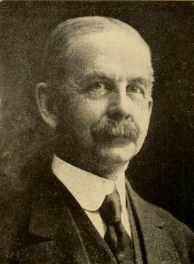Calvin DeWitt Paige | |
|---|---|
 | |
| Member of the U.S. House of Representatives from Massachusetts's 3rd district | |
| In office November 4, 1913 – March 3, 1925 | |
| Preceded by | William Wilder |
| Succeeded by | Frank H. Foss |
| Member of the Massachusetts House of Representatives | |
| In office 1878-1879 | |
| Personal details | |
| Born | May 20, 1848 Southbridge, Massachusetts |
| Died | April 24, 1930 (aged 81) Southbridge, Massachusetts |
| Political party | Republican |
Calvin DeWitt Paige (May 20, 1848 – April 24, 1930) was a U.S. Representative from Massachusetts.[1]
He was born in Southbridge, Massachusetts. He was president of the Central Cotton Mills Company, the Southbridge Savings Bank and the Edwards Company.[1]
Political career
[edit]He served as a member of the state house of representatives in 1878 and 1879, he was delegate to the Republican National Convention in 1884, and a member of the Governor's council in 1906 and 1907.[1]
He was elected as a Republican to the Sixty-third Congress by special election, after the death of representative William H. Wilder, and reelected to the five succeeding Congresses from 1913 to 1925.
After leaving congress, he withdrew from public life, and engaged in banking in Southbridge.
References
[edit]- ^ a b c "PAIGE, Calvin DeWitt". Biographical Directory of the United States Congress. Retrieved 2024-05-17.
See also
[edit]External links
[edit] Media related to Calvin Paige at Wikimedia Commons
Media related to Calvin Paige at Wikimedia Commons


Well, that’s interesting to know that Psilotum nudum are known as whisk ferns. Psilotum nudum is the commoner species of the two. While the P. flaccidum is a rare species and is found in the tropical islands. Both the species are usually epiphytic in habit and grow upon tree ferns. These species may also be terrestrial and grow in humus or in the crevices of the rocks.
View the detailed Guide of Psilotum nudum: Detailed Study Of Psilotum Nudum (Whisk Fern), Classification, Anatomy, Reproduction